We recognize your love and care for your Betta fish but maintaining its health can be tough. Although this fish has captivating beauty and variety, it is prone to many diseases. These diseases can harm your beautiful betta’s well-being in many ways. In today’s article, we will discuss the Betta fish velvet, one of the most common diseases in Betta fish.
Let me ask: Do you know why a Betta fish has a dusty gold sheen covering its scales? Let’s answer that but before, here’s what we will discuss today.
First of all, we will understand what the Betta fish Velvet is. After all, you must know a disease before trying to cure it. We will also cover its causes and symptoms along with the best treatment and prevention measures for Betta fish Velvet disease. This way you will be equipped to detect this disease early and treat your betta effectively. So, without any further ado, let’s move to it.
Quick Guide to Betta Fish Velvet Disease
| Name | Gold Dust Disease, Rust, Velvet |
| Cause | Parasite named Oödinium |
| Disease Type | Parasitic disease |
| Symptoms | Rusty or goldish sheen on fins |
| Treatment | Medication + extra care |
| Contagious | Yes, highly contagious |
| Severity | Mild to lethal |
What is Velvet Disease?
Velvet disease is a common parasitic infection in betta fish. It is caused in freshwater and marine fish by a parasite called Oodinium. It is commonly known as the Velvet Disease, Gold Dust Disease, Coral Disease, and Rust Disease. Here are its two types:
Freshwater Velvet Disease
In freshwater fish such as the Betta, this disease is caused by Piscinoodinium pillulare. It obtains nutrients from the fish’s body by attaching to the skin and gills. As the parasite feeds, it makes golden cysts around itself. Thus, the fish appears to have a golden sheen on its body. Additionally, the parasite itself has a brown-goldish color that intensifies the rusty shade. Mainly, this disease is caused by poor water quality and tank maintenance.

Marine Water Velvet Disease
In marine water, this disease is mainly caused by Amyloodinium ocellatum. This parasite is similar to its freshwater cousin; however, it has adapted to seawater. It also causes a velvety coating on the fish along with significant health issues. Its main causes also include poor water conditions and stress.
In all cases, this parasite clings to the fish’s gills and skin and leads to a dusty or rusty appearance. Sometimes, it looks like a velvety sheen is covering the fish’s body, hence the name. After attaching to the fish, it sucks out nutrients, leading to a weaker, unhealthy fish.
The primary reasons behind this outbreak include poor maintenance and low water quality. Such dirty environments allow the parasite to thrive and multiply quickly. Additionally, a well-lit tank can worsen the situation, as this parasite performs phototrophy. So, it’s best to keep the light a little dim, so the parasite can’t perform photosynthesis-like activities.
For a more detailed insight, keep reading!
Is Betta Fish Velvet Contagious?
Yes, Betta fish velvet disease is highly contagious. The underlying parasite can quickly multiply and spread from one fish to another. This spread is quicker if the tank is not clean and well-maintained.
The parasite can also swim freely in the tank. If an infected fish is present in the tank, the parasite can swim and reach the tankmates in a jiffy! While the parasites can swim freely in the tank and infect other fish, they primarily spread through direct contact with contaminated water, equipment, or other infected fish.
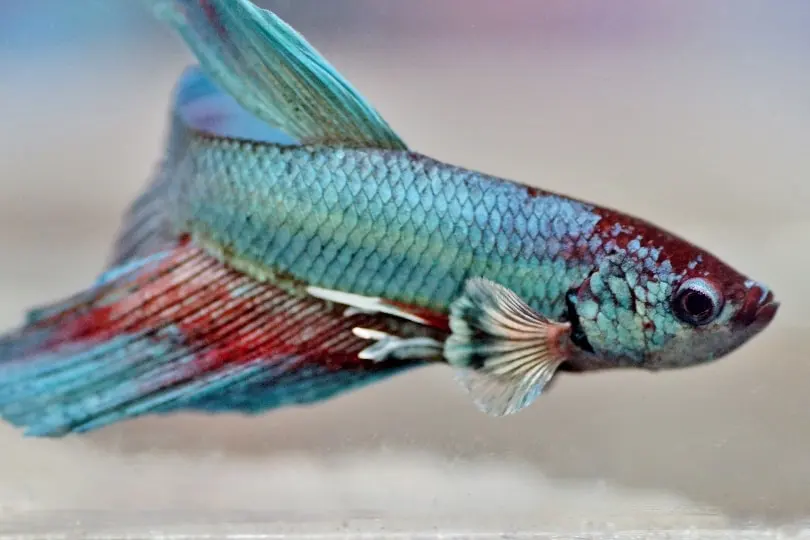
Can Betta fish recover from Velvet Disease?
Betta fish velvet disease is a serious parasitic infection that requires immediate treatment. It can be fatal if not treated promptly, as it destroys the fish’s cells. This leads to issues like respiratory distress and organ failure.
However, with early detection and proper treatment, this disease can be cured. The treatment will involve multiple steps and intensive care in isolation. Along with that, medication is also necessary in most cases as it allows quick recovery.
Life Cycle of Betta Fish Velvet
To treat this disease effectively, you must know its stages. Here is a guide that will allow you to determine the fish’s condition and treat it accordingly.
Tomont Stage
The Tomont stage is a reproductive phase. In this stage, the parasite has entered your tank and is multiplying rapidly. This reproduction typically occurs in the substrate or tank decoration.
Just for an idea, a single Oodinium parasite can make about 256 more, however this number can vary.
Juvenile Stage
In this stage, the Tomites leave the substrate and decor to swim freely in the tank water. At this point, they are looking for fish hosts to latch on. they have up to 48 hours to find a host or else they die. In this period, they primarily survive on photosynthesis. Thus, the parasites are most vulnerable in this phase.
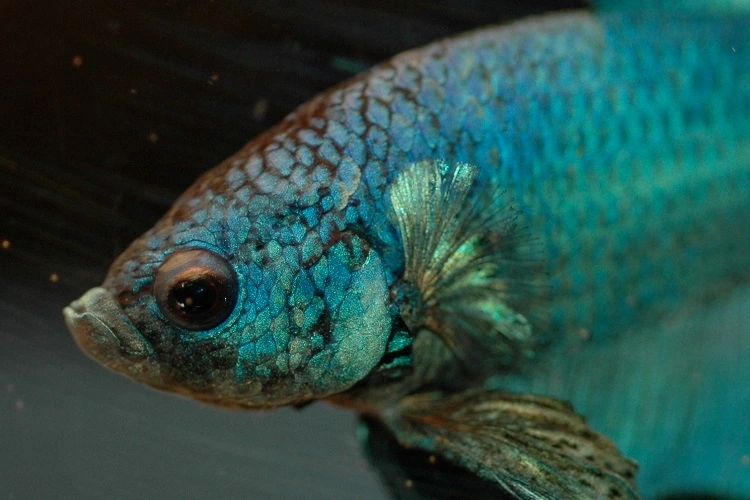
Adolescent Stage
If the Tomites manage to find a host, they become Trophonts. As they cling to the Betta fish, they start to eat through its natural slime coat. This coat is vital for betta’s health and defense.
After destroying the protective coat, the parasite will eat away the Betta’s cells. Now, the parasite will start to encapsulate itself in a golden cyst. Thus, you can visibly notice the rusty, velvety sheen on the fish’s body.
This stage is extremely dangerous for the Betta as the parasite destroys the fish’s cells. The Betta will experience lethargy and respiratory distress along with several other issues.
After passing all three stages, the parasite will mature in about 6 days. After maturing, it will detach from the Betta’s body and drop into the substrate or decoration. It will then restart from the cycle and reproduce Tomonts.
Causes of Betta fish velvet
Primarily, the Betta fish Velvet disease is caused by a single-cell parasite. These parasites can penetrate through the fish’s protective coat and eat its cells. The main reasons behind this parasite’s presence in the tank are as under
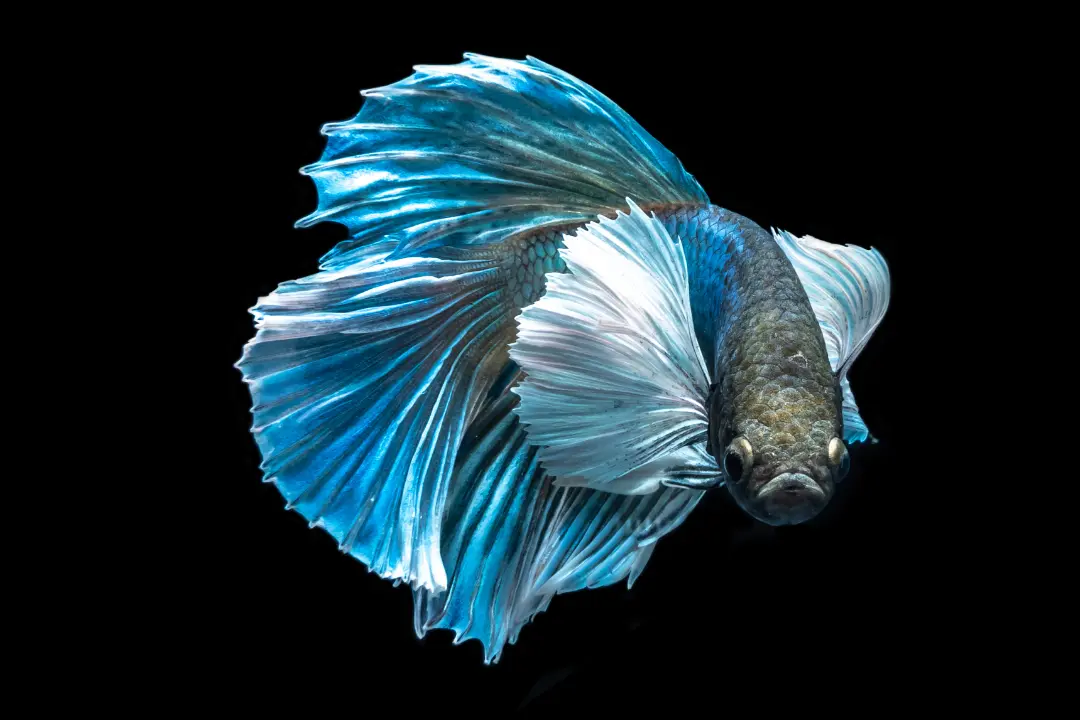
- Parasite Introduction in the tank through contaminated fish, plants, and decoration
- Poor water quality and unmaintained tank
- Inadequate or extra lighting
- Stressed fish due to overcrowding and incompatible tankmates
- High ammonia, nitrite, and nitrate levels in the tank water.
- Improper Diet and Temperature fluctuation
All these factors contribute to provide the ideal environment for the parasite to flourish. However, it is important to understand that this parasite doesn’t pop out of nowhere! it has to be introduced in the tank by any contaminated object, may it be fish, plants, or decor. Other factors such as poor water quality, and temperature fluctuations will only support the disease to spread.
Symptoms of Betta fish Velvet
Now that we have covered the causes, let’s move on to the symptoms of Betta fish Velvet disease. These symptoms are indications that something is wrong with your fish. Check your Betta for the following symptoms to determine if your fish is infected or not!
- Your fish will have a gold or rust-colored coating on its body. It might look like sprinkles or gold. These are often visible under a flashlight.
- The fish will start to lose its vibrant color. Yellow and orange spots will start to develop in its body and the skin might start to peel.
- The fish might show signs of lethargy. It will be less active and tired as the body is constantly fighting to survive.
- The fins will become lifeless and clamped. The overall beauty of the flowy fins will reduce significantly.
- The fish will start rapid breathing and gasp for air. As mentioned earlier, this parasite attacks the body, mainly the gills, hence the respiratory distress.
- The fish will rub itself against objects and tank walls to relieve irritation.
- As the disease advances, the fish might get bulgy eyes. it will suffer from exophthalmia. This is an indication of distress due to a parasitic attack.
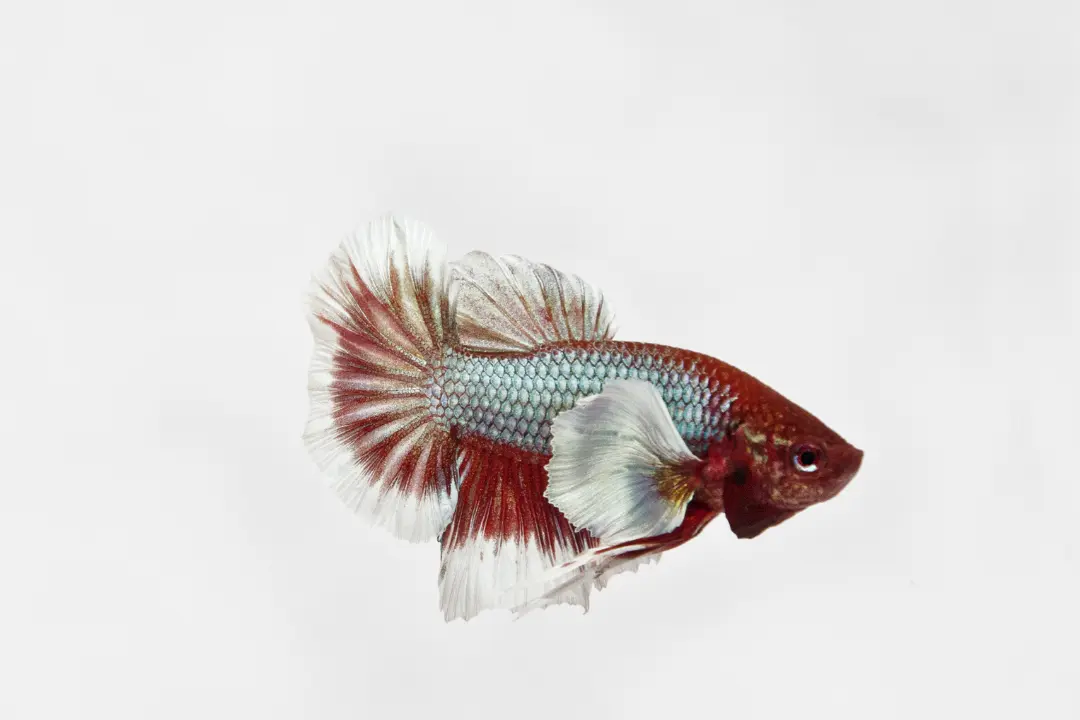
If your fish has these symptoms, you must act quickly. These clues indicate that your fish needs immediate treatment as its body is attacked by a vicious parasite. Follow the guide given below to reduce your betta’s pain and treat it properly.
Betta Fish Velvet Treatment
Now that you know how to detect a Betta fish velvet disease, let’s move to the cure. As we know, this parasitic disease is lethal for the Betta fish. Hence, quick and intensive treatment is required for the Betta’s recovery. Here is a step-by-step guide for treating your Betta fish against the velvet disease.
Isolate the Fish
As soon as you observe symptoms of Velvet disease, remove your fish from the tank and isolate it in a separate tank. Quarantine is a must for the safety of tankmates and the fish itself. It will also help you manage and treat the infection.
Increase the Water Temperature
Adjust the tank conditions to ideal. Keep the tank temperature a little high, about 80 to 86 degrees Fahrenheit will do. Increased temperature accelerates the parasite’s lifecycle.
Reduce the Tank Light
Reduce the tank light. As mentioned earlier, this parasite performs photosynthesis in its free-swimming stage for nutrition. It’s best to reduce the light so it can’t perform such activities. This way you can get rid of the parasite as soon as it starts its life. Additionally, a darker environment inhibits the parasite’s growth.

Maintain Good Water Quality
Maintain good water quality by using a high-quality water testing kit to monitor the water parameters. Maintain safe ammonia, nitrite, and nitrate levels. Regularly perform partial water changes of about 20 to 25 percent, every 2 to 3 days. This will guarantee that your tank has freshwater with minimum contamination.
Adding a good quality tank filter is best. Remove any activated carbon in the tank filter. It can absorb medications rendering them useless. Here are some of the BEST Tank water filters for Betta fish (without activated carbon)
UPETTOOLS Sponge Filter without Activated Carbon
AquaClear 20 Power Filter with removable Carbon
Hygger Double Sponge Filter without carbon
Administer Anti-parasitic Medication
Use anti-parasitic medication such as copper sulfate, malachite green, methylene blue, or formalin. Follow the dosage on the packaging or as prescribed by a professional. Typically, you should administer medication for about 10 days to eradicate all parasites. However, it’s best to consult a veterinarian before using any medication.
Monitor the Fish
Lastly, keep a close eye on your fish during treatment. Look for changes in symptoms and behavior. Continue to monitor the water quality and light condition. After the treatment is completed, monitor the fish for a few more days to prevent any relapse.
You can effectively treat your Betta fish by following the above-given treatment for 10 to 14 days. However, consult a veterinarian if the fish shows no signs of recovery. The time for treatment may vary depending on the severity of the case.
Preventing Betta Fish Velvet
The best way to tackle the Betta fish Velvet disease is to avoid it in the first place. Yes, you can treat it but it will severely disturb your Betta’s well-being. To ensure your fish’s good health and longevity, keep it away from such diseases.
To prevent the Betta fish velvet disease, or to stop it from happening again, follow the steps given below.
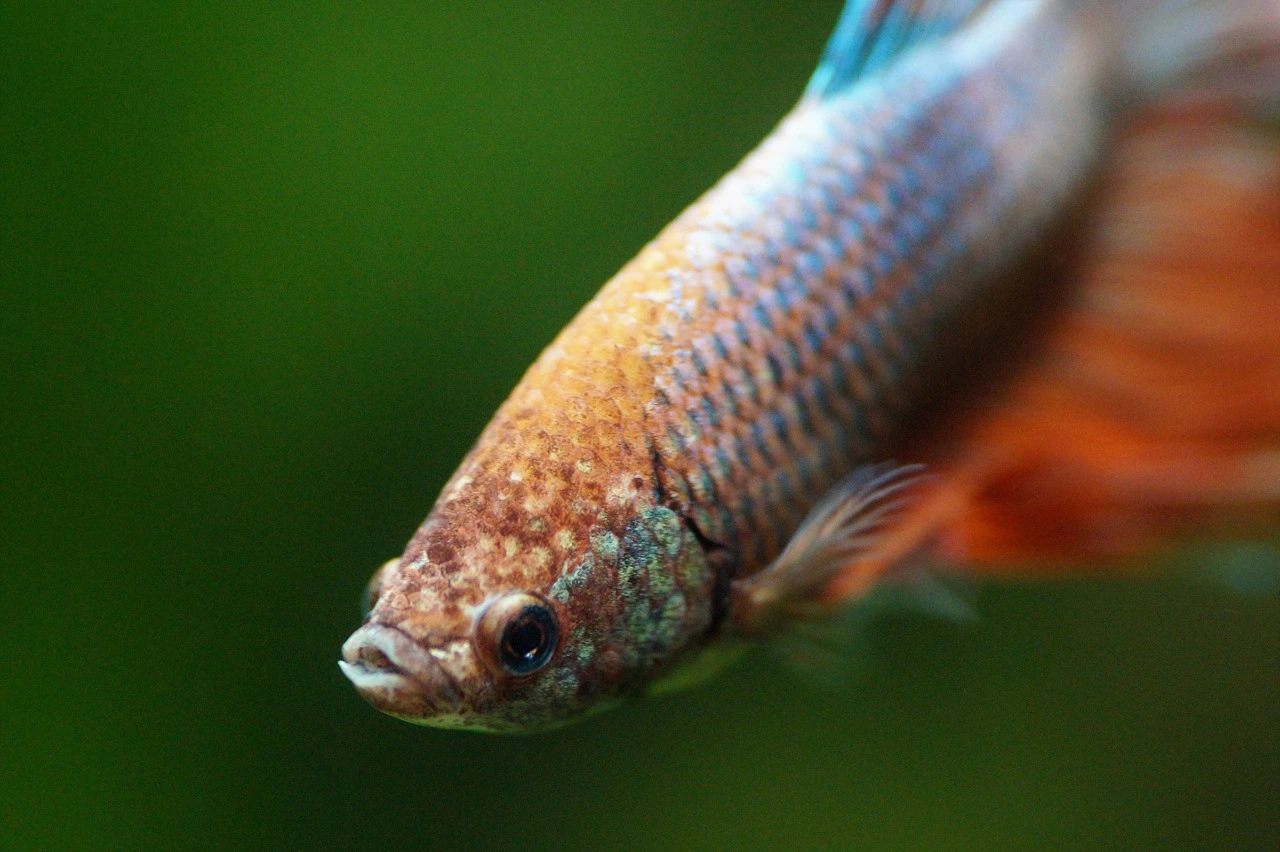
Maintain Water Quality
Regularly monitor water quality and use a high-quality water testing kit. Parasites and Bacteria can only thrive in a dirty tank with poor water conditions. Maintaining a hygienic and well-maintained tank will reduce the possibility of such outbreaks.
Change 20 to 25 percent tank water every week. This will minimize the contaminations and help reduce ammonia and toxin levels. A clean environment is a crucial necessity for Betta fish, it keeps them happy and stress-free. Using a good filtration system is standard.
Maintain Water Temperature
A Betta fish thrives in water temperatures of about 76 to 82 degrees Fahrenheit. This temperature must be maintained consistently without any fluctuations. Any fluctuation in the tank water can lead to stress and a weak immune system. It’s best to use a good-quality water heater.
Quarantine and Sanitize
Whenever you add a new object in the tank, quarantine or sanitize it respectively. If it’s a fish, make sure you isolate it in a separate tank for at least 2 weeks before adding it to your fish tank. This period will allow you to observe any signs of illness and parasitic disease. This way you can prevent any bacteria or parasite introduction in the tank.
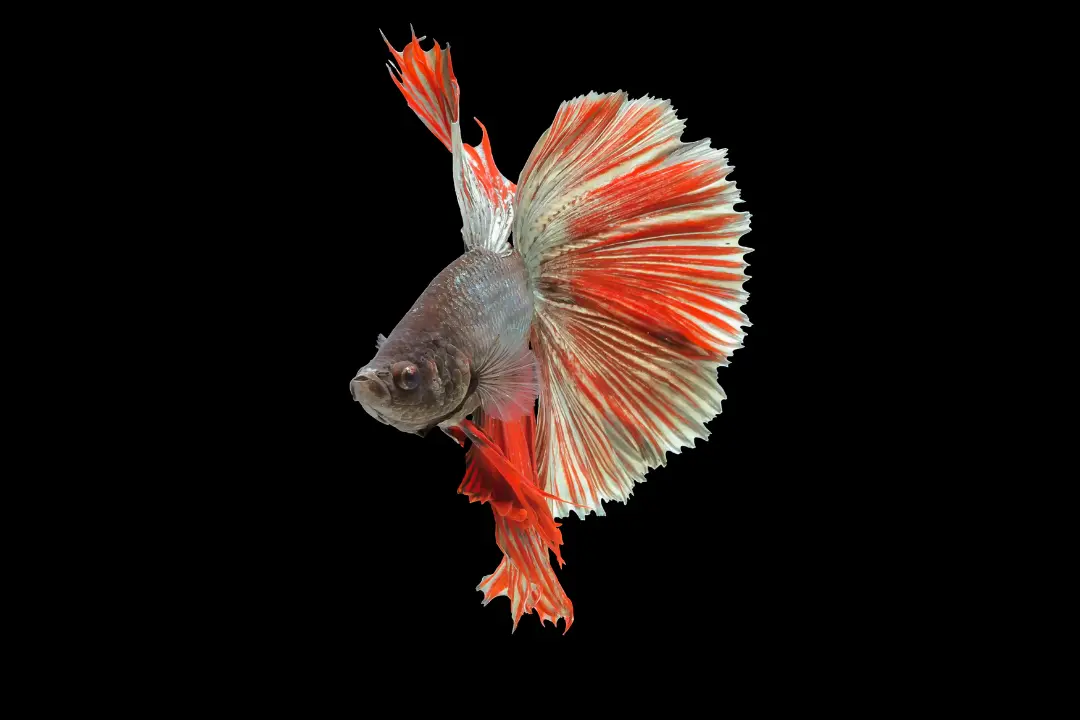
If you are adding decorations like rocks, plants, and ornaments, sanitize them thoroughly. It’s a good practice to quarantine new plants too. Sometimes, bacteria and parasites find ways we don’t expect, so it’s best to be careful. Additionally, use gloves and nets before handling the fish, never stick your hands in the tank.
Don’t Overcrowd the Tank
Overcrowding is one of the main reasons for a parasitic outbreak. Fish such as the Betta, need ample space to thrive. Overcrowding reduces their swim space and leads to stress. Moreover, disturbing and aggressive tankmates can cause stress and damage as well.
Additionally, overcrowding a tank increases the amount of pollution in the tank. The more the fish, the more the waste. Thus, the ammonia, nitrate, and nitrite levels will increase rapidly. So, it’s best to avoid overcrowding a Betta fish tank in all conditions.

Don’t Overfeed
Overfeeding not only leads to health issues for Betta fish but also makes the tank dirty. When you feed your fish with extra food, some of it is left over. If not removed timely, it provides nutrition to bacteria and parasites in the tank. Additionally, it increases the toxin levels leading to a contaminated tank. Follow the Betta Fish Diet routine to void over feeding.
Following these safety measures, you can ensure a safe tank for your Betta. Even if your betta already has the Velvet disease, or has recovered, make sure you follow these guidelines to prevent any future mishaps.
FAQ’s
What causes velvet in fish?
A parasite named Oodinium causes the Velvet disease in many fish. This parasite has multiple types that can infect freshwater and Marine water fish.
What kills velvet?
The best way to kill the parasite that causes velvet is to turn the tank light off and increase the tank water temperature. This way the parasite dies in its early free-swimming stage. Medication is also necessary to fully eradicate this disease from the tank.
Can salt cure velvet?
Aquarium salt is a great way to treat velvet disease. However, aquarium salt alone is not enough, you must add supporting treatment such as increasing temperature and administering medication is necessary.
How to cure velvet in betta fish?
To cure velvet in Betta first, first of all, isolate the fish. Maintain ideal parameters in the isolating tank and slightly increase the temperature. Administer medication as required. For a more detailed guide on treating Betta fish Velvet disease, read the treatment topic given above.
Can a fish recover from velvet?
Yes! Fish do recover from Velvet disease. However, it requires intensive treatment. With timely detection and proper care, fish can get healthy. Late detection and improper care might result in long-term health issues for the Betta, and even death.
Conclusion
In conclusion, the Betta fish Velvet disease is a serious health issue that can be fatal. If not treated on time, this disease can cause severe organ damage and respiratory issues. Thus, it requires immediate treatment with prompt actions. With proper care on time, you can treat this disease at home. However, you might need to visit the veterinarian in certain cases.
In essence, the Velvet disease can be deadly for a Betta fish. You must recognize this disease as soon as possible. Its symptoms include a rusty look on the fish’s body, specifically around the gills. Moreover, you will notice behavioral changes and clamped fins along with rapid breathing.
Let me ask: Have you ever noticed these symptoms in your Betta fish? Share your thoughts and queries with us in the comments below!
The main causes for a velvet disease outspread include a dirty tank with poor water quality. Carelessness while adding new objects or fish in the tank can cause this disease as well. To prevent this disease, you should do the exact opposite. Keep a clean tank and maintain good water quality. For more tips related to the prevention of Velvet disease, read the article above.
To treat this disease, you should isolate the fish in a separate tank. Maintain ideal conditions with increased temperature. Administer medication as prescribed and monitor the fish for about 10 to 14 days.

